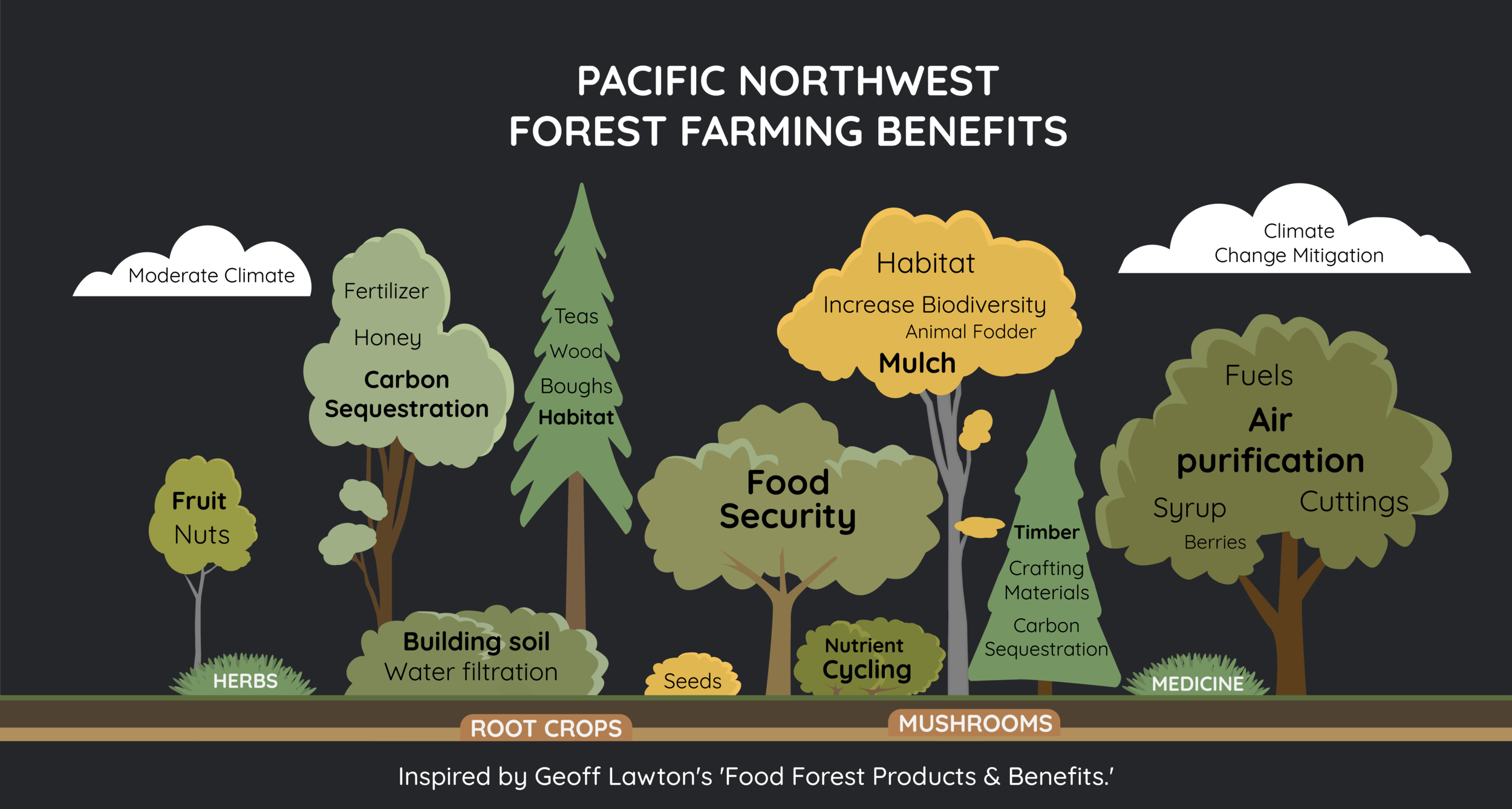What Is Forest Farming?
/Patrick Shults’ work with bigleaf maple falls under an agroforestry practice known as forest farming, the cultivation of specialty crops within established forests. Crops may be harvested from the trees themselves (syrup, nuts, or honey produced from the blossoms), but it also often involves the cultivation of plants under the tree canopy. Some examples include:
Foods like huckleberries, fiddleheads, nettles, or mushrooms.
Medicinal herbs such as Oregon grape, black cohosh, and wild ginger.
Decorative plants that can be used in floral arrangements (such as salal or fern cuttings) or in crafts.
Unlike wildcrafting (collecting plants growing wild in a forest), forest farming involves management of the forest with long-term health and productivity in mind. Techniques might include adjusting the light level on the forest floor by thinning or pruning trees, increasing certain populations through planting or seeding, or improving plant growth by weeding out competitors.
However, forest farming requires dramatically less work and fewer inputs of fertilizer, water, and pesticides than annual crops. Here’s how:
No tilling is needed, which reduces labor and loss of topsoil. It also allows soil organisms to thrive and cycle nutrients, which improves fertility. In addition, leaf litter from trees provides a natural soil amendment.
The diversity of plants provides habitat for a wider range of those helpful little soil organisms, further improving soil and plant health. Diverse plant species also provide habitat for pollinators and other beneficial insects and wildlife that help to control pests, reducing the need for pesticides. Those pollinators and beneficial insects can benefit adjacent crops, beyond your forest. Increasing plant species diversity in forests has also been shown to improve the health of trees intended for timber crops.
The deep roots of trees and shrubs make them much more drought tolerant than annual crops. They also shade the smaller plants below, protecting them from extreme heat. The natural mulch created from the leaves also reduces the need for water.
This practice is nothing new—native peoples in many regions of the world have utilized forest farming for thousands of years. Today, we often think of forests as places to harvest trees, pass through, or leave untouched for wildlife. But growing and harvesting crops within a forest in a sustainable way doesn't just add the possibility of new income streams. It can also provide an opportunity to interact within forest systems in a way that deepens our relationship, and even introduces diversity that benefits wildlife and other plants in the ecosystem.
Learn more
Pacific Northwest's ‘forest gardens' were deliberately planted by Indigenous people, Science
Forest Farming, Association for Temperate Agroforestry
How farming in forests could sustain the planet, BBC Follow the Food
Forest Farming, Snohomish Conservation District
Sign up for Farm & Forest, our new agroforestry newsletter!
This quarterly newsletter will highlight some of the amazing plants and latest trends in agroforestry. Create habitat for beneficial insects to promote pollination and natural pest control, provide shade for livestock, increase soil microbe diversity to improve soil health, grow new crops to diversify your income, and more!


